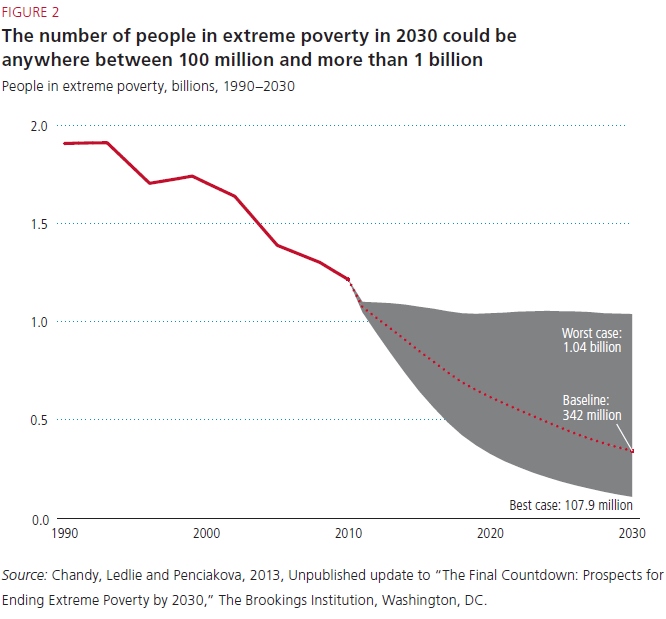Wanted: A new game plan for ending extreme poverty
New report from Development Initiatives says economic growth won’t save us.
 No one should have to live on less than $1.25 a day. As you might imagine, that miniscule level of income traps people in hunger, poor health, and the constant risk of disaster—not to mention an accompanying threat to one’s dignity and opportunity.
No one should have to live on less than $1.25 a day. As you might imagine, that miniscule level of income traps people in hunger, poor health, and the constant risk of disaster—not to mention an accompanying threat to one’s dignity and opportunity.
World leaders in general—and President Obama in particular—have rightly pledged to ensure that no one has to live below the $1.25/day line that measures extreme poverty. But how realistic is this? Can we actually get there by the deadline of 2030?
The answer, according to a new, terrific report by Development Initiatives entitled “Investments to End Poverty,” is that we can—but we won’t unless we change our game plan for how to get there.
The report is hands-down the most important contribution in some time to rethinking our strategy on how to end extreme poverty. As good as the High-Level Panel report on post-2015 goals was, it was still aspirational. Judith Randel and her Development Initiatives (DI) team have given us something more important: a data-filled owners’ manual for getting the best poverty-fighting performance out of development finance.
The report’s many insights are too numerous to cover in one blog post; no doubt this report will be fueling conversations for some time. But perhaps the most important is a look at whether or not we actually can lift everyone above $1.25/day in the next seventeen years.
According to DI, the world is on a track right now to lift about another half-billion people above $1.25/day by 2030. That would still leave 342 million people living in extreme poverty—more than the population of the United States. This assumes that a lot of things go right in the next seventeen years—no global financial meltdowns, no commodity shocks, no major wars or epidemics. Perhaps this is unrealistic of course as we face growing global inequality and the impeding impacts of climate change. If any or all of those things come to pass, the worst-case scenario could leave us treading water, with one billion people still trapped below the $1.25 line.
The good news is that DI’s report contains a lot of important considerations for how re-chart the course to beat extreme poverty by 2030.
Firstly, continued global economic growth is going to be important and useful to lifting everyone out of extreme poverty. But growth is not equal everywhere. There are still many countries—and locations in countries—where gains aren’t reaching enough people and where the poorest still face stiff barriers to being able to benefit from economic growth.
And while more foreign investment has been pouring into developing countries, too much is flowing right back out. In 2011, about 472 billion US dollars in foreign direct investment flowed into developing countries, then 420 billion flowed right back out as repatriated profits.
All this points to the fact that official development assistance (ODA) is still going to be vital to helping us get to zero extreme poverty. ODA is a vital resource in the poorest countries who have the most trouble attracting investment and can uniquely be targeted to help the poorest. Also ODA is more responsive to policy initiatives designed to solve particular challenges that markets alone can’t fix.
So we can’t coast our way to the end of poverty. We’re going to have to make significant changes in how and how much we invest.
***
DI’s Investments to End Poverty report is the new must-read for anyone in the post-2015 discourse. Watch this blog for more consideration of DI’s data and continuing conversations.
